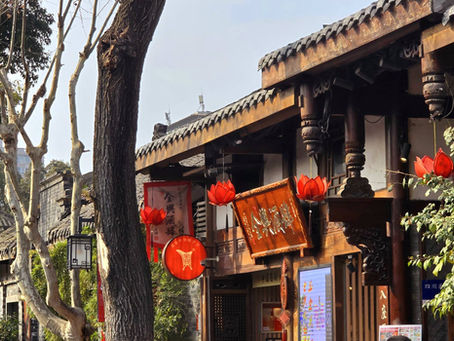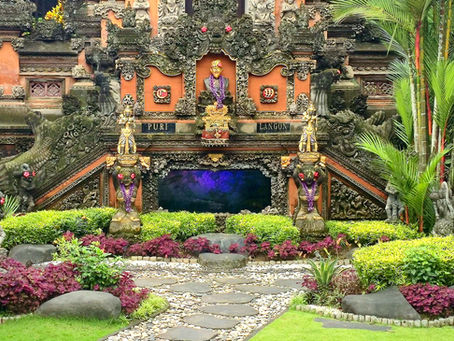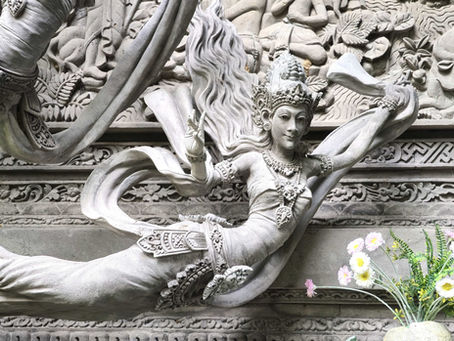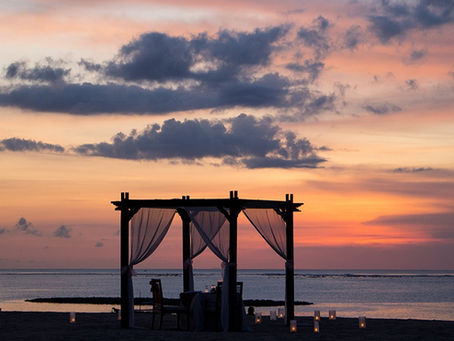top of page

GLOBAL SHANANIGANS

Search


Sacred Tombs of The Pagoda Forest
Located at the base of Mount Shaoshi in Henan Province, the Pagoda Forest at Shaolin Temple is a sacred necropolis within the broader monastery complex. With its origins tracing back to 618 AD during the Tang Dynasty, the forest is home to over 240 stone and brick pagodas, each serving as a tomb or memorial for esteemed monks, abbots and martial art masters.
Shannon


Chengdu Night Cruise
Founded by the Kingdom of Shu in the 4th century, Chengdu and the Jinjiang River served as a crucial intersection to three trade corridors for the Silk Road. In 316AD it was established as the Capital under the Qin Dynasty and was not only a key centre for trade but became renowned for its music, poetry and cuisine.
Shannon


Kuanxiangzi Alley & The Blood Lantern Widow
Tucked into the vibrant heart of Chengdu, the capital of Sichuan Province, Kuanxiangzi Alley is a rare remnant of Qing Dynasty urban design, its origins reaching back over 300 years. Established in the late 17th century, the alley was constructed over an ancient military garrison and gradually developed into an elite residential area.
Shannon


Chengdu Panda Research Base - China’s National Treasure
One of the world’s most respected facilities for panda conservation and research is the Chengdu Research Base of Giant Panda Breeding. Established in 1987, the base was created to increase the wild panda population and ensure their survival, at a time when only around 1,000 remained. Over the years, it has become a symbol of scientific study and wildlife preservation.
Shannon


Kanto Lampo Waterfall
Shaped by both chance and design, one of Bali’s most unexpected natural wonders is Kanto Lampo Waterfall. Unlike the island’s ancient cascades that have poured down jungle cliffs for centuries, this waterfall is a relatively recent creation. In the early 2010s, adjustments to a local irrigation system redirected water across a rocky cliffside and over time the flow carved its way over volcanic stone, giving rise to the unique cascade we see today.
Shannon


Ubud Water Palace
Built in honour of its namesake Saraswati, the Hindu goddess of knowledge, music, art, wisdom and learning, Pura Taman Saraswati is a graceful water temple nestled in the heart of downtown Ubud. This sacred site blends spiritual reverence with classical Balinese aesthetics, offering a peaceful retreat just steps away from the town’s busy centre.
Shannon


Bao Lac
Bảo Lạc Town, near Vietnam’s northern border with China, hides a blood-soaked past beneath its calm surface. For centuries, this rugged land was home to fiercely independent Tày, Nùng, Hmong, and Dao tribes who lived and died resisting Vietnamese and Chinese domination. Imperial forces repeatedly tried to crush their autonomy, but the mountains ran red as rebellion flared again and again.
Shannon


Lempuyang Temple - Heaven's Gate
Standing proudly at 1175 metres above sea level, on the peak of Mount Lempuyang, this ancient temple complex is among Bali’s oldest and most revered, believed to predate most Hindu temples on the island. Although there is some confusion about the site’s exact age, the establishment of temples here stretches back at least a millennium.
Shannon


Puri Langon Temple
Puri Langon is a privately owned royal compound located in central Ubud. It is the personal residence of Tjokorda Ngurah Suyadnya, better known as Cok Wah, a respected figure in the Ubud royal family. Though it remains a functioning private home, Puri Langon is open to the public free of charge, offering rare access to a lived-in royal space that continues to serve spiritual and cultural functions within the community.
Shannon


Hanoi Old Quarter
A living, breathing time capsule, Hà Nội Old Quarter is a tapestry woven from centuries of colonial exploitation, Confucian rituals, dynastic collapses and wartime destruction. Despite relentless modernisation and gentrification, the Old Quarter remains defiantly alive. It preserves not just Hà Nội’s heritage but the very essence of Vietnam’s ability to adapt and endure.
Shannon


Thailand's Golden Triangle
The Golden Triangle snakes along the borders of Thailand, Laos and Myanmar, a land as beautiful as it is brutal. The Mekong River twists like a silver serpent through shadowed valleys, past isolated villages whose fields once fed a global hunger for heroin. This rugged, turbulent region earned its infamous name from centuries of opium fueled violence and despair. More than a crossroads, the Golden Triangle is a nexus of greed, pain and heartbreak.
Shannon


Beyond the Mist - Exploring Sapa
Tucked high in the Hoàng Liên Son Mountains of northwestern Vietnam, Sapa’s history predates the modern tourism boom by centuries. Archaeological discoveries suggest that humans have inhabited this rugged region for thousands of years. Stone tools, ceramic fragments and burial items uncovered in the Muong Hoa Valley point to a Neolithic culture that once thrived along the riverbanks. These finds, some dating back 3000 years, are among the earliest signs of life in Vietnam’s m
Shannon


Inside the Puputan - Bali's Bloody Resistance
The Dutch first reached Bali in 1597 while scouting new ground for conquest and profit. They left without drawing blood but they didn’t leave without a decision. Bali had been marked. For the next two centuries, the island remained untouched, not because the Dutch had lost interest, but because they were waiting for the moment it would be worth the slaughter. It wasn’t peace. It was a pause before an extermination. When they returned, the rivers would turn red.
Shannon


Ho Chi Minh Museum
The Ho Chi Minh Museum in Hanoi is more than a museum, it is a shrine to revolution, memory and sacrifice, standing as one of Vietnam’s most important monuments. It honours the man known as “Uncle Ho” while also serving as a vast archive of the struggles that shaped modern Vietnam, a place where personal biography and national trauma merge into a single, powerful narrative.
Shannon


Uluwatu Temple
Overlooking the vast and turbulent Indian Ocean on Bali’s Bukit Peninsula, Uluwatu Temple (or Pura Luhur Uluwatu) perches 70 metres above the waves, a landmark of both awe and solemnity. Archaeological evidence shows its origins date back to the 9th century, based on an ancient split gateway bearing a chronogram marking 886 .AD, confirming its megalithic roots as one of the island’s oldest sacred sites
Shannon


Bhoma - Bali's Protector and Judge
In the architectural language of Balinese temples, Bhoma statues are not merely decorative but play a protective and symbolic role. Bhoma is derived from the ancient Sanskrit word bhūma, meaning “Earth” and is considered a guardian spirit linked to fertility, the forest and subterranean realms. Usually mounted above temple gates or embedded within sacred water features, these fierce, leaf entwined figures serve as guardians of spiritual boundaries,
Shannon


Ganesh - The Remover of Obstacles
In the moss veiled temples of Bali, Ganesha is far more than a familiar Hindu icon, he is a living force who moves between light and shadow. Though his roots lie in Indian Hinduism, Bali’s Ganesha (also known as Batara Gana) has taken on new dimensions, shaped by animist spirits, local rituals and the Balinese understanding of cosmic balance.
Shannon


Taman Dedari - Dine Among the Divine
Born from the legend of Resi Markandeya’s vision of angelic dancers over the Ayung River, Taman Dedari blends myth and appetite in equal measure. Here, guests savour Balinese flavours in a riverside setting guarded by monumental stone Dedari, the celestial maidens of old.
Shannon


Gateway to Bali - The Soul of Tuban
Long before it became a quiet suburb near Kuta, Tuban was a vital coastal hub within the ancient Kingdom of Badung, linking Bali to the wider archipelago through maritime trade. Its name, drawn from the sound of retreating waves, reflects a deeper spiritual rhythm, one that still echoes through Balinese belief in the cycles of life, death and rebirth.
Shannon


Hiroshima Castle - Echoes of an Empire
Rising from the flatlands of western Japan, Hiroshima Castle was a powerful nerve centre built by Mōri Terumoto during an age of shifting allegiances and ruthless ambition. With its broad moat and imposing stone walls, the castle was less about isolation and more about control, a symbol of calculated authority in a time of near constant war.
Shannon
bottom of page